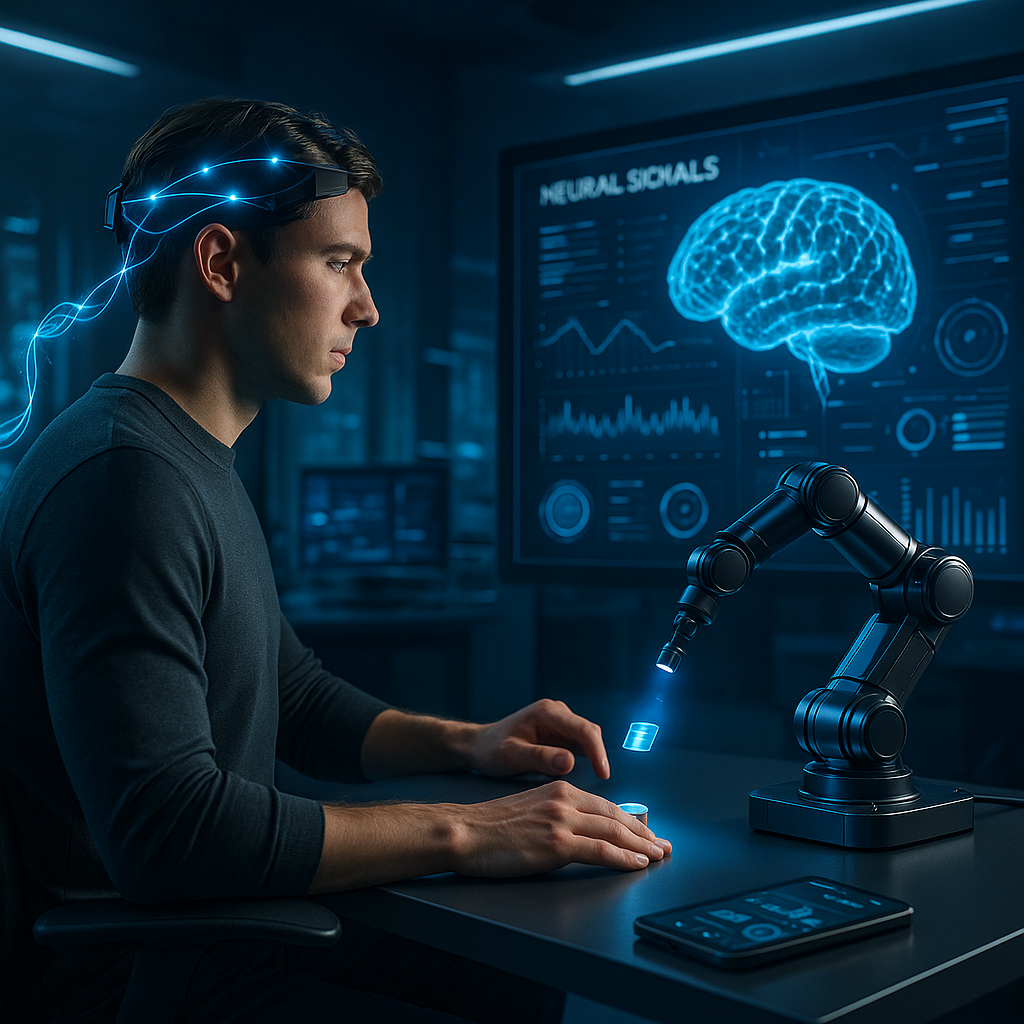Picture controlling a robot with your mind alone. No buttons or voice commands needed — just your thoughts. Sounds like science fiction, doesn’t it? Yet, thanks to the expanding field of neuro-robotics, this sci-fi scenario is becoming reality.
Neuro-robotics represents the intersection of neuroscience and robotics. It aims to link the human brain with machines enabling us to control robots and devices through our thoughts. Let’s explain it in plain language.
🔍 What Is Neuro-Robotics?
Neuro-robotics is a technology that allows your brain to communicate with machines — such as robotic arms, exoskeletons, or even wheelchairs.
This happens through a unique system known as a brain-computer interface (BCI). It interprets your brain signals and converts them into actions.
Picture it like this:
- Your brain transmits a signal (such as “move right”)
- A computer detects and comprehends the signal
- The robot carries out what your brain instructed it to do
That’s neuro-robotics in simple terms.
⚙️ How Does It Work?
Neuro-robotics might seem complicated, but here’s a straightforward explanation of its function:
- Brain signal detection – Sensors go on your head (or sometimes inside) to read your brain’s electrical activity.
- Signal translation – A computer processes these brainwaves and works out what you’re trying to do (like move a hand).
- Robot control – That command goes to a machine, which acts right away based on your thought.
This setup lets people control robots or digital devices with their minds alone, without needing to move at all.
🧑⚕️ Real-Life Uses of Neuro-Robotics
Neuro-robotics isn’t just a lab test — it’s already helping people in the real world. Here are some practical examples:
- 🦾 Robotic arms help people who’ve lost limbs
- 🦿 Exoskeleton suits allow paralyzed people to stand and walk
- 🧑🦽 Brain-controlled wheelchairs assist people with severe mobility issues
- 🧠 Therapy tools boost brain and muscle coordination for stroke or Parkinson’s patients
These technologies have an impact on lives by giving people more freedom and autonomy.
🌍 Why It Matters
Here’s why neuro-robotics plays a crucial role:
- 💪 It restores independence to individuals with disabilities
- 🧠 It creates fresh approaches to machine interaction
- 🔧 It has the potential to develop treatments for brain trauma or mental health issues
- 🎮 It might even transform our computer, game, or virtual reality use — using just our thoughts
As this technology advances, we’re realizing the human brain has more capability than we thought — when linked to machines.
🔮 What’s Coming Up in Neuro-Robotics?
The neuro-robotics future looks promising. We could soon witness:
- Brain interfaces without wires or implants
- Better control from thoughts to actions
- Homes, phones, and gadgets that the brain can control
- Machines that react to feelings and what’s on your mind
As prices drop and the tech gets easier to use, brain-linked robotics might become an everyday thing — not just for folks who need it for health reasons, but for everyone.
